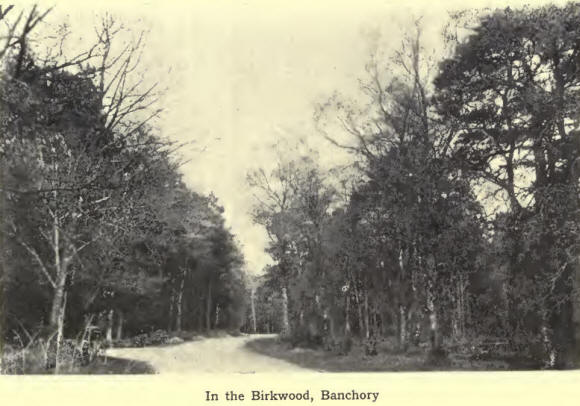The high position of
agriculture in Kincardineshire cannot be thoroughly understood without a
reference to the enthusiasm for improvement displayed by many of the
landed proprietors in the latter half of the eighteenth century. Of
these the most remarkable was the famous agriculturist, Barclay of Urie,
whose work, as pointed out in Robertson’s Agricultural Survey, reads
like a romance. In the half century that followed the Union of 1707, he
had acquired, from residence in England, very advanced ideas in
agricultural theory to the abolition of fairs and markets. Labour-saving
machinery has been introduced; scientific methods are now adopted in the
culture, manuring, and draining of fields; in the rearing, feeding, and
general treatment of his stock, the farmer has at his command to-day the
very best results of scientific experiment and research.
In Kincardineshire mixed
farming is general. On the hill grazings of the Grampian slopes, more
attention is naturally paid to sheep-rearing than to tillage; but even
on these farms all the available land is reserved for' cereals or
grasses.
The area of the county is 248,195 acres, of which 127,923 acres are
waste or heather, not under the plough, which leaves about 48 per cent,
of cultivated land, as against 24.2 for the whole country.
Twenty-first in area and twenty-fourth in population among Scottish
counties, Kincardineshire stands in acreage under cultivation as follows
: for barley 7th, for turnips 9th, for potatoes nth, for wheat 12th, for
oats 16th. The high position in regard to turnips is because the county
is a feeding as well as a breeding area for cattle and sheep.
Practically one-sixteenth of the whole barley acreage for Scotland is in
the Mcarns, the soil of which is remarkably well adapted for the growth
of barley. Of the 708 acres of wheat grown in the county in 1913 more
than half was grown in the strong lands of the St Cyrus district, the
remainder in the Howe, chiefly around Laurencekirk ; while on Deeside
with its light gravelly soil it was entirely absent. The cultivation of
oats, potatoes, and turnips is well distributed over the county. Only a
few acres are given to rye and beans.
The county does not, like Aberdeenshire and Forfarshire, possess any
distinctive breed of cattle; but among the early improvers of cattle
breeds were several notable Mearns men ; and to-day the Bum and the
Portlethen herds are well known to agriculturists.
The following is a comparative table of the number of the live stock in
the county at the beginning of last century and in the years 1913 and
1917:

Frequent mention is made
of the abundance of timber in Kincardineshire in early days; and the
existing plantations show the suitability of certain districts for the
growth of forest trees. On the Durris estate some of our exotic trees
were first introduced, and have given the most remarkable results. Two
species have here shown their superiority—the Douglas fir and the
Menzies spruce. The former, owing to its free growth, freedom from
disease, and wonderful adaptability to a wide range of soils, has proved
itself capable of producing more volume per acre than any other species
of exotic tree. One Durris specimen of the Douglas fir, measured in
1904, was 110 ft. high. The whole of the Deeside district is, however,
well suited for the growth of timber, the other principal forest regions
being along the southern spurs of the Grampians. In many cases the lower
hills are wooded to the summits. The usual trees grown are Scots fir,
larch, spruce, and the commoner hardwood trees—ash, plane, elm, beech,
birch, and oak.
 district is, however,
well suited for the growth of timber, the other principal forest regions
being along the southern spurs of the Grampians. In many cases the lower
hills are wooded to the summits. The usual trees grown are Scots fir,
larch, spruce, and the commoner hardwood trees—ash, plane, elm, beech,
birch, and oak.
|
